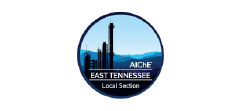TRACK 1 – EQUIPMENT AND INSTRUMENTATION & SUSTAINABILITY
Click on seminar title below to read the abstract
PANEL: MAKING SUSTAINABILITY A REALITY NOW
This panel of four technology providers will provide snapshots of how innovative systems are being applied to help achieve sustainability objectives and a cleaner planet. Emerging systems and technology may transform the future of work, accelerate achievement of environmental objectives and contribute to improving the overall bottom line. This is cutting edge Industrial-Tech. Presentations will run about 45 minutes with 10 minutes for Q & A. Seating is limited.
Panelis presentations will consider the following and more:
- Can this technology or system make an immediate impact?
- Is the benefit quantifiable and/or measurable?
- Feasibility, cost, ROI
Participating companies:
Kickstarting the Sustainability Engine: Leveraging Technology to Support Circular Economy
Construct-X, Ted Blackman, CEO
Everyday emissions reduction with no capital expenditure and reduced operating cost
Siemens PSE, Sterling Allen, Business Development Manager, Energy & Chemicals
Steam System Optimization is essential to plant sustainability and optimized production
TLV Corporation, Jim Risko, President
A model-driven framework to enable sustainability in the chemical industry
AVEVA, Ian WIllitts, VP Simulation & Learning
More to be announced
Scott Bouse, Senior Associate, WJE Associates
One of the largest cost and schedule drivers in facility turnarounds is the unexpected discovery of equipment damage. Drawing a distinction between ‘merely ugly’ and ‘actually unsafe’ conditions is an historically slow process, providing turnaround engineering teams with an unpleasant choice between waiting for detailed engineering and executing a costly and hastily-planned repair. Our clients find that having access to real-time engineering expertise during a turnaround gives them better control over unnecessary schedule and cost impacts that arise from these surprise discoveries. Having dedicated support from consulting engineers stationed at your facility permits even the most demanding engineering inquiries (FEA, Fitness For Service assessments, etc.) to be done on your pace. Work that classically takes a week or more to get back from an outside consultant can routinely be performed on-site in less than a day. The presentation will present a number of examples where significant schedule or cost impacts were prevented by having engineering experts stationed on-site during a turnaround.
What attendees will learn:
- How to approach adverse findings in a way that builds institutional confidence in the eventual path forward, even if that means leaving a flawed component in service.
Activity during shutdowns represents the highest level of stress for instrument technicians, planners, and managers. Calibration usually represents a significant portion of shutdown man hours. Anything that can save time will result in completing all planned tasks and/or shorten the outage. It is important that quality, safety and reliability are not compromised. By analyzing your processes during an outage, you can minimize time intensive documentation. Improved work processes during an shutdown to achieve maximum efficiencies can then be applied to day to day operations for even further gains.
This presentation is going to focus on the hyper activity during shutdowns and review how specific processes can equate to significant efficiencies. With upfront planning, organization and utilizing automated data collection tools, calibration time can potentially be cut in half. Digitally collected data instead of manual entry or a scanned document creates the opportunity for better data integrity and analytics. The bottom line is depending on the number of instruments scheduled to be calibrated, time savings could equate to many hours or even days.
What attendees will learn:
- How improved calibration processes can equate to significant efficiencies during shut downs
- Impact of digitalization of calibration data on data integrity
- Best practices for calibration planning
- Techniques to analyze data to make better decisions on how often to calibrate
- How to save when calibrating
For many companies, the annual testing of safety instrumented system is very time-consuming. Plant standstills and the associated interruption of smooth plant operation are just one example of why the call for the extension of test cycles is becoming louder and louder.
Statistics show that 25 % of systematic errors in particular are due to parameterization and 15 % to other maintenance work. In our presentation, we will introduce you to innovative ways in which Heartbeat Technology on the SIL device concept can extend test cycles, prevent systematic errors and reduce maintenance costs while maintaining a high level of safety.
What attendees will learn:
- Learn about typical systematic failure in the implementation of safety devices
- Gives an overview of the SIL device concept and the processes and tools that can be used to support it in the planning, support and maintenance of SIL devices.
- Gets an outlook on current and future diagnostic and monitoring technologies in SIL protection devices for detection of systematic errors in practice
- Learn the possibilities to reduce maintenance costs and to avoid systematic errors in safety instrumented system.
Javier Portos, VP of Engineering & John Covington, Sr. Strategic Account Manager, Integrated Power Services
What attendees will learn:
- Understanding the importance of the mechanisms that lead to critical motor failures.
- Maintenance practices designed to help keep equipment in optimum condition.
- Special focus on general mechanisms related to early motor failures based on root cause analysis, experience history and end-user feedback of Qty. 200 medium-voltage and high-voltage AC Induction & AC Synchronous electric motors operating in the Petrochemical industry.
- Examples of electric motor design and manufacturing changes that contribute reduced reliability.
- Improving reliability and reducing failures of medium-voltage and high-voltage AC Induction & AC Synchronous electric motors.
Specac as a supplier of ruggedized NIR process monitoring cells teamed up with Eastman to develop a robust NIR cell for the continuous analysis of key components on a pilot plant in a process stream containing a low molecular weight polymer.
Historically samples of the reactor had to be taken manually to measure the key components of the process stream by GC and other methods off-line. Not only did this require operators to adhere to stringent safety controls allowing a safe removal of the sample, but also resulted in a significant delay between the time the sample was taken and the results being available for reactor control.
Eastman Chemical joined forces with Specac as a specialist manufacturer for the supply of high end near-infrared spectroscopic process cells to measure the composition of the liquid process stream on-line and in-situ. The installation of on-line NIR measurements allows pilot plant chemists to gain much more insight into the effect of process variations, operating on a wider range of process parameters, but at the same time more reliably and safer due to a constant stream of compositional information.
In the presentation Specac will share some key design features of their NIR cell portfolio, examples of where the gathering of on-line process data provided extra insight and what the next steps are for the utilisation of NIR process monitoring.
What attendees will learn:
- Advantages of spectroscopic techniques compared to more traditional analysis methods in terms of information richness, reliability and safety
- Process cell considerations for a safe operation of the cells
- Design of a robust NIR process monitoring installation
- Calibration efforts required for NIR installations
- Maintenance requirements
- How on-line process analysis can help pilot plant engineers make more informed decisions
The objective of the presentation is to provide the attendees with a technical review of the lightning event and methods of protection against lightning activity. The discussion will review the theory of operation, benefits of these systems and their limitations. Further, the topic will review the overall lightning risk to a facility and provide comments on achieving a total system approach in achieving lightning protection. This would include grounding and strategic surge protection considerations.
What attendees will learn:
- LIGHTNING PROTECTION
- The Lightning Threat Define the conditions and environment that exists before, during and after lightning.
- Examine the lightning stroke mechanism, parameters and related physical characteristics.
- A review of the secondary effects of
- a lightning strike will be included with how this
- secondary effect can affect electrical and electronic systems.
- Conventional Protection Techniques
- Discuss the operating principles, history and purpose of conventional Franklin lightning protection.
- Evaluate conventional systems’ ability to collect and divert strikes, and creation of secondary effects.
- Charge Transfer Technologies
- Operating principles of lightning strike
- avoidance
- systems.
- Introduction to lightning protection
- using charge dissipation
- with practical examples.
- GROUNDING
- Grounding Technology
- Definition of grounding requirements.
- Identification of factors related to achieving a good ground connection.
- Review of grounding principals and best practices
- Examination of Grounding Electrodes
- Review of different types of grounding methods and electrodes.
- Comparison
- of various types of electrodes
- SURGE PROTECTION
- Surge Protection
- Requirements
- Areas of Vulnerability and Strategic Locations
- Key factors for surge protector selection
Acuren Inspection provides integrated services to industry’s largest clients. Acuren provides integrated services including repair and maintenance and inspection services using composite crews with multi-disciplined trades, experienced personnel, IRATA or SPRAT certified technicians, and customized access optimization programs.
We have a range of highly skilled individuals to complete tasks efficiently and safely. Our rope access techniques are safer than traditional methods with training regulated by governing bodies. Our crews aim to complete tasks in a shorter time frame than conventional methods, saving both time and resources.
We partner with our customers to provide exceptional project management services designed for their needs and to minimize risk. We understand that our customers operate in a climate of market pressures beyond their control and when we design a solution, it is a customized plan based on years of experience.
What attendees will learn
- The use of Rope Access personnel can quickly start and finish short-term maintenance projects, while reducing the total spend a specific scope of work by not requiring scaffold be set up or taken down, and have maintenance completed in an expedient manner, reducing total downtime.
This presentation will focus on how to use airborne & structure-borne ultrasound for “out of the box” immediate ROI applications that can aid in reducing a facility’s wasted energy. Applications covered will include compressed air & compressed gas leak detection & reporting, steam trap testing & reporting, and reducing friction related bearing failures with structure-borne ultrasound.
What attendees will learn:
- How to document and report losses associated with compressed air leaks.
- How to document and report losses from compressed gas leaks.
- How to test steam traps and document the losses from failed steam traps.
- How condition based bearing lubrication can help with friction related issues in bearings.
- Energy conservation initiatives are reliability initiatives.
When considering an in-situ chemical analysis, one needs to determine the hazardous area classification, number of sample points and distance between, sensitivity & specificity, limit of detection, precision & accuracy required and cost. In this seminar, three techniques will be compared these being Near infrared, FT-IR & Raman spectroscopy. All of these are non-destructive inline techniques and real-life examples will be shown to illustrate the benefits and weaknesses of each technique. This seminar will also discuss the combination of spectroscopy and multivariate data analysis and best practices for developing robust and reliable models for plant implementation
What attendees will learn:
- What type of spectroscopic technique is fit for purpose for particular types of chemical analysis
- What type of probes & flow cells are required for different sample streams
- How to perform remote measurements using fiberoptic cables & accessories
- Best practices for developing multivariate data analysis models
- Ways to output results to process control systems for real time monitoring & control



